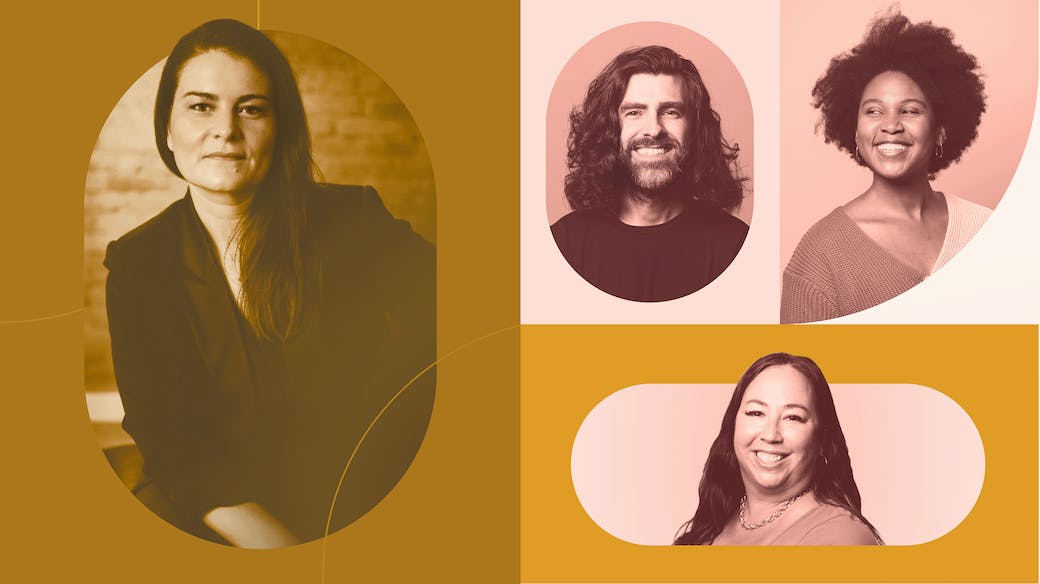Four customer service lessons leaders learned early — and still call on today


Every leader steps into their role with a work history that shapes their leadership style and values. From c-suite executives with MBAs and years spent climbing a corporate ladder to startup founders leading small teams straight out of college, founders and builders are influenced by positive and negative lessons of early jobs.
By the time you’re tasked with leading people and strategy for an organization, you’re likely tapping into those leadership lessons — whether consciously or not.
No big surprise that the lessons that continue to guide leaders at Help Scout are those from early customer service experiences. After all, these are folks whose careers have led them to build a business focused on supporting and delighting customers.
So what’s the point of a nostalgic trip down customer service lane? Whether you’re leading a customer-centric business or just launching a career in customer support, taking time to intentionally reflect on how early job lessons have influenced the way you show up in your work today is a valuable practice.
Reflection helps nurture self-awareness, cluing you into your own challenges, strengths, and values and the impact you’re having on your team and business. Thinking through how past roles have honed that commitment to customers can offer fresh inspiration.
Looking for a few examples? We asked Help Scout leaders to share takeaways from early jobs that sparked a commitment to customers and how those lessons are shaping the company and the team’s leadership today.
Lesson 1: Show up every day to delight the customer
In a Friday Note sent to team members, Help Scout co-founder and CEO Nick Francis shared that he and co-founders Jared McDaniel and Denny Swindle had all worked in restaurants during college. The impact of that service work, he noted, is still present in the commitment to customer-centricity in the business they’re building today.
“Discovering the fulfillment that comes from doing right by the customer is the reason I've been so happy to work on this business, and this specific set of challenges, for 12+ years,” he said. “A lot of that passion was born in a restaurant, waiting on tables, serving people.”
While developing software may not create the same celebratory experience as a meal in a fine-dining restaurant, the drive to deliver exceptional service carries through in the business. “We empower customer-centric businesses to be memorable, which feels really good,” Nick said.
Lesson 2: Keep customer experience front and center
Help Scout’s chief experience officer Lisa Phillips also discovered the fulfillment of customer delight in her very first job — at Domino’s Pizza. “We were trained to always make things right for the customer, and I took so much motivation from that focus on customer satisfaction,” she said. Keeping customer needs front and center continues to propel her work today: “I still feel that core motivation to create delight and put customers first, and it really was instilled in that first job.”
For chief revenue officer Andrea Kayal, putting customers first was also a core lesson from an early role. Her first job out of college was as an event marketing coordinator for BMW, which saw her travel around the country to put on 75 experiential marketing events in six months. The intensity and pace of that work forged the grit and positive approach that guide her work and leadership style today, but the lasting takeaway was in customer experience: “I learned that the more you can do to put your customers at the center and create a positive, memorable experience, the more loyalty you’ll build,” she said.
Lesson 3: Become your own most curious customer
Lisa learned another key lesson in serving customers through a different early job: to follow her curiosity to create the best customer experience. In her first job in tech, in 1998, she sold web pages for a local community portal. But before she could sell, she had to understand what was then a totally new concept for most customers. The deep dive into learning that came next sparked an interest that would drive her career trajectory.
“I couldn't sell the product with integrity if I didn't understand how it worked. As I learned more and more, my curiosity and interest grew until I was the one building the pages and making them work,” she said. Discovering her passion and recognizing her skills through that experience was an essential step in her career path.
Now, as she leads customer experience initiatives and a team of her own at Help Scout, she does so with the same commitment to integrity and expertise that drove her first role in tech. “I always return to my inherent curiosity and those core principles of deep understanding, empathy, and impact that will empower the customer,” she said.
Lesson 4: Recognize the impact of gratitude — both giving and receiving
Of course, not all lessons from early jobs are positive. Sometimes it’s the challenges or ineffective management you experience that inform how you ultimately choose to lead your own team.
When Help Scout’s VP of brand, Kristen Bryant Smith, reflected on early job lessons, she was struck by a similar theme in her service jobs: a demoralizing lack of recognition. “I think about how hard I worked in the retail and restaurant roles I had and how I can’t remember even one time that any of my hard work was rewarded any differently than that of the people who just showed up and did far less than I did,” Kristen said.
Today, as a leader, she takes care to call out the contributions from her team. “Far too often, folks go above and beyond at work and feel that nobody notices. That’s an awful feeling. I don't want anyone on my team to feel like they're not recognized or appropriately compensated for their effort,” she said.
And while she may not have received recognition in those early roles, the gratitude she did receive — from customers — also continues to shape her leadership. “I learned the power of hearing genuine praise from a customer you’ve helped — how impactful that is,” she said. “Hearing that gratitude and knowing you’ve provided really great service can just bring you a little light. That still motivates me to serve our customers today.”
Lessons learned continue to fuel the journey
From the mission of the company — “to empower businesses to delight more customers” — to processes that guide day-to-day operations and shape culture, Help Scout leaders’ early lessons are clear and present in the business today.
Curiosity to understand and continually improve customer experience is evident in Whole Company Support, regular Voice of the Customer calls, and a Customers channel on Slack. Gratitude and recognition flow at company-wide Town Hall meetings and through dedicated Warm Fuzzy and People Changes Slack channels. And, a drive to create delight remains a constant goal in product design. So, while our leaders days of service work may be in the rearview, a commitment to customers still drives the team and the company.
The Supportive Weekly: A newsletter for people who want to deliver exceptional customer service.